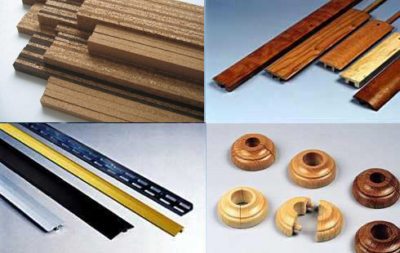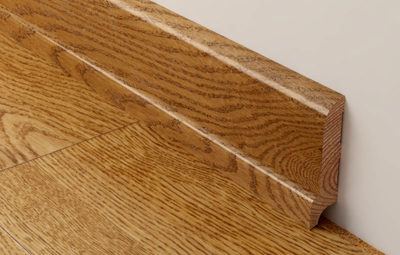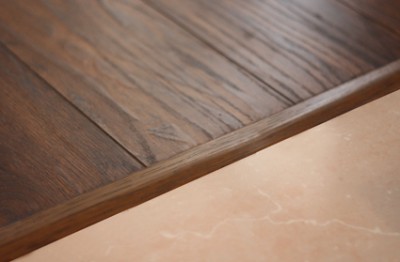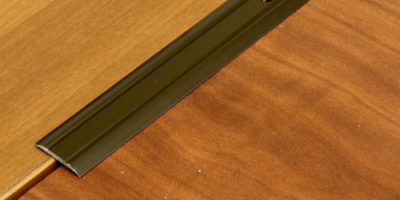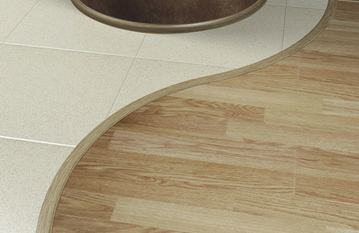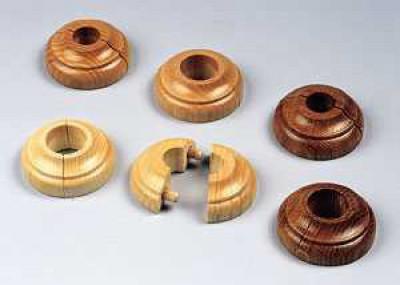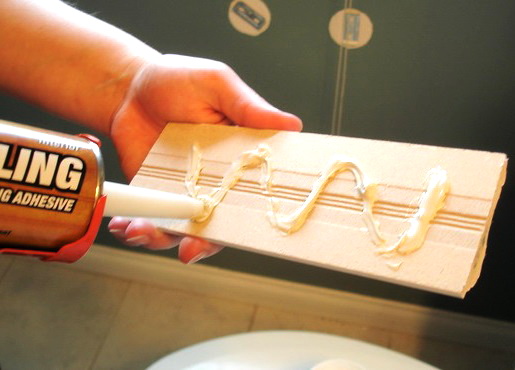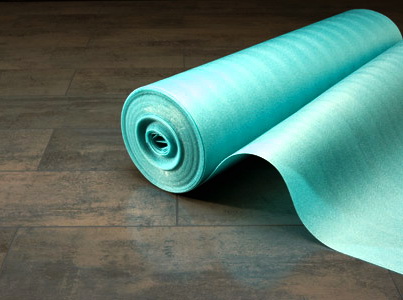We choose parquet accessories - skirting boards, sills, rings, expansion joints
Any floor covering, whether it is a democratic laminate or an elite parquet, can be purchased complete with appropriate accessories. These are special details accompanying the main material, without which the floor finish looks incomplete. So what accessories do you need to purchase for the newly-minted owner of expensive piece parquet and how to choose it correctly? Read about it below.
Why do we need parquet fittings?
Accessories for parquet performs one important task: it hides the gaps, joints and seams that are formed when laying a wooden coating. The fact is that the wood of which the parquet is made is a deformable material, that is, it swells from moisture, and dries due to excessive dryness. Therefore, if you lay the parquet close, for example, to the walls, then soon the tree will "lead". And all the beauty is lost. To prevent this from happening, any master who is more or less versed in his business puts parquet dice, leaving small gaps in the places where the parquet comes in contact with walls, columns, thresholds, pipes, etc. And so that this whole design is not only practical, but also beautiful, the resulting gaps are hidden under the fittings.
There are the following types of accessories for parquet: skirting boards, rings, sills, compensators.
Skirting board - create beauty around the perimeter
Skirting boards are located around the perimeter of the room, overlapping the temperature seams between the wall and the floor. They are straight and curved. The latter serve to bend around various columns, ledges, niches, etc.
When choosing a skirting board for your parquet, first of all, pay attention to the material of manufacture. Skirting boards are:
- from array
- veneered
- from laminate
The most expensive and spectacular, of course, plinths from the array. As a rule, they are made from whole wood of valuable species, for example, from oak, mahogany, beech, wenge. They look gorgeous, are combined with the elite parquet as much as possible and, in addition, are completely natural, environmentally friendly material. However, skirting boards from the array still have a drawback - with increased humidity, they can change their shape and bend.
A more affordable option is veneered wood skirting. Their inner base is made of solid inexpensive pine or spruce, and the front side is lined with veneer of valuable species. That is, in appearance such a product is practically no different from an expensive solid plinth. But in terms of moisture resistance far exceeds it.
There is another type of skirting board - from laminate. They are made of MDF planks covered with a film with a wood look. This type of skirting board is easy to install and just as easily removed if necessary. Special plasticity allows you to use them to mask all sorts of wall irregularities. The moisture resistance of laminate skirting boards is also beyond doubt. Their only drawback is the appearance, which will “knock out” against the background of expensive parquet.
Lifts - Important Transition Details
Lines are designed to overlap joints between parquet and other flooring, as well as to design a transition between different floor levels. They can be made from:
- tree
- metal
- laminate flooring
- plastic
Wooden sills are the most expensive and moody - you need to take care of them in the same way as for the parquet floor. And this is not surprising, because they are made of dense wood of valuable species.
More unpretentious are the laminated sills made of durable MDF, wrapped in a film with a "wooden" pattern.
If the main criterion when choosing accessories is strength and durability, then, undoubtedly, metal sills (moldings) are in the lead in this regard. As starting materials for them use aluminum, brass, stainless steel.
Sacks can also be made of plastic - this is the most inexpensive way to design joints and gaps on the floor. Plastic is a moisture resistant material, flexible and durable, therefore it will ideally fulfill its function for many years. For smooth, wave-like transitions, there are sills made of thermoplastic, which can take almost any shape and adapt to the necessary conditions.
Rings - masking gaps in heating pipes
Rings are used to mask cracks that occur at the junction of parquet with heating pipes. Each ring is detachable and consists of two halves. When masking the gap, it is enough to surround the pipe with these halves and stick them at the joint. Most often, rings for parquet are made of wood, for example, beech, ash, oak, cherry, etc.
Rings are chosen to mask the gaps around the pipes, respectively, their inner diameter should correspond to the outer diameter of the pipe.
Compensators - a way to hide deformations
At the junction of the parquet with any fixed coating, for example, ceramic tiles, marble, stone, expansion joints should remain. If the floor lines are straightforward, then the easiest way to do this is with decorative sills. But with the currently fashionable wavy forms of coating and round transitions, it is more convenient to use either thermoplastic sills or cork compensators. The latter will also be useful if you want to make the transition from one coating to another as unnoticed as possible.
Compensators are thin strips made of plastic cork. They fit inside the expansion joint and, with deformations of the coating, change their shape. After the termination of the deforming effect, the shape of the compensators is also restored.
Choosing accessories for parquet, you should take into account the design of the room and prefer details that correspond to this style. Then the fittings will look “like a glove”, making the elite image of the flooring complete.

